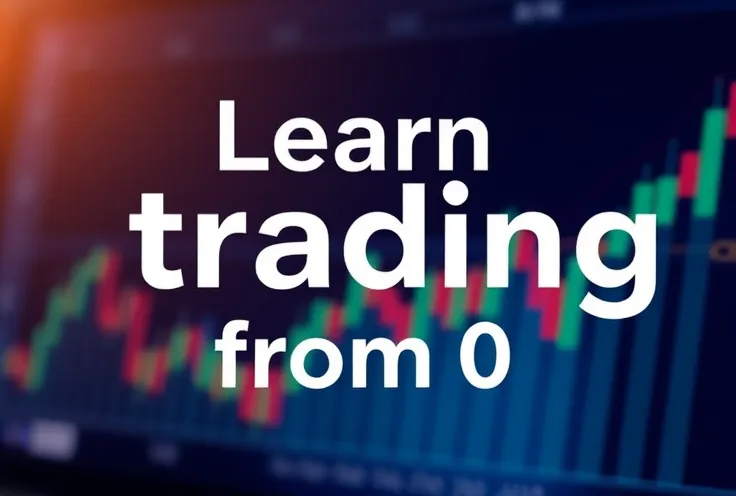How to learn trading in the stock market?
Whether you’re a complete beginner or looking to brush up on your skills, this trading guide could help you navigate the exciting but challenging world of stock trading.
Why is it important to learn the stock market?
- The Stock Market is a vast and complex ocean, and it is important to know how to navigate it before you jump in.
- Many people watch videos on YouTube or other social media platforms about people making big profits in the stock market, and they are inspired to jump in themselves. But they do not realize that the stock market is a stormy sea, always full of turmoil. It may appear calm on the surface, but the storm inside can rise up and drown you at any time. Even experienced people can get caught in the storm.
- That’s why it’s important to learn about the stock market before you start investing. You need to understand how it works, and you need to develop a strategy for investing. You need to start slowly and gradually increase your risk as you gain experience.
If you follow this roadmap, you will be able to understand the stock market and start investing with confidence
Stock Market Basics: A Beginner’s Guide
What is the stock market in simple words, and how does it work?
The stock market is a platform where buyers and sellers of company shares come together to trade. When you buy a share, you become a part-owner of that company. LEARN MORE
Understanding the Primary Market and Secondary Market
The primary market is where new shares are issued and sold to the public for the first time. The secondary market is where existing shares are traded between investors. LEARN MORE
IPO stands for Initial Public Offering. It is the process by which a company goes public and sells its shares to the general public for the first time. LEARN MORE
A stock or share represents a unit of ownership in a company. When you buy a share, you own a small portion of the company and are entitled to a share of its profits. LEARN MORE
An index is a statistical measure that tracks the performance of a specific sector or the overall market. It helps investors compare different stocks and gauge the market’s direction. LEARN MORE
Understanding Trading and Demat Accounts: Key Differences and Functions
A trading account is used to buy and sell stocks. A demat account is used to hold shares in electronic form. LEARN MORE
What is a stock broker and its types?
A broker is a financial professional who acts as an intermediary between buyers and sellers of stocks. A discount broker offers low-cost trading services but may not provide investment advice. LEARN MORE
Difference Between Intraday and Delivery Trading
Intraday trading involves buying and selling shares within the same day. Delivery trading involves buying shares and holding them for a longer period. LEARN MORE
Technical Analysis
Technical analysis is a method of forecasting future stock price movements by studying historical price patterns and trading volume. LEARN MORE
Line Chart, Bar Chart, Candlestick Chart LEARN MORE
Nature and Anatomy of Candlestick
Just like humans have different natures, similarly, every candlestick has its own nature, and if we understand its nature, then it becomes easier to understand the market. LEARN MORE
A trend is a general direction in which the stock market or a particular stock is moving. Trends can be identified by analyzing historical price data. LEARN MORE
What are trend lines, and how do you draw trend lines?
Trend lines are lines drawn on a stock chart to connect points of support and resistance. They help identify the overall trend of a stock’s price. LEARN MORE
What are support and resistance, and how do you draw the SAR levels?
Support and resistance levels are price points at which a stock’s price tends to bounce back or reverse its direction. LEARN MORE
More to come
If you have any other questions, please feel free to contact me. info@marketread.in

Thank you for sharing excellent informations. Your web site is so cool. I’m impressed by the details that you¦ve on this website. It reveals how nicely you perceive this subject. Bookmarked this website page, will come back for more articles. You, my friend, ROCK! I found just the info I already searched all over the place and just could not come across. What a great site.
Greetings! Very helpful advice on this article! It is the little changes that make the biggest changes. Thanks a lot for sharing!
I have been exploring for a bit for any high quality articles or blog posts on this sort of area . Exploring in Yahoo I at last stumbled upon this site. Reading this info So i’m happy to convey that I have an incredibly good uncanny feeling I discovered just what I needed. I most certainly will make certain to don’t forget this web site and give it a look on a constant basis.
Great web site. A lot of useful information here. I am sending it to a few friends ans additionally sharing in delicious. And obviously, thank you on your effort!
Thank you for your kind words and for sharing the site with your friends! I’m glad you find it useful, and I appreciate your support. 🙏
I really enjoy reading through on this website, it has got excellent posts. “One should die proudly when it is no longer possible to live proudly.” by Friedrich Wilhelm Nietzsche.
I’m so glad you’re enjoying the posts! Nietzsche’s wisdom is timeless, and I appreciate you sharing that quote. Thank you for reading! 📖
I dugg some of you post as I thought they were handy very beneficial